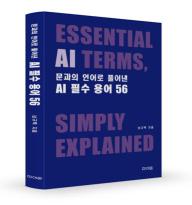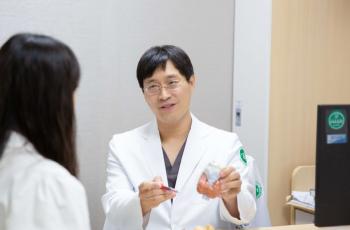AI only identifies the cause of the disease with echocardiography...Hypertrophic cardiomyopathy 96% accuracy
Jul 28, 2025
An artificial intelligence (AI) technology has been developed in Korea to identify the cause of cardiac hypertrophy only with echocardiographic images. This technology is expected to reduce patient burden and increase treatment efficiency by enabling accurate diagnosis without MRI or biopsy.
The heart can become bloated due to various conditions such as hypertension, cardiomyopathy, and amyloidosis. However, it was difficult to distinguish these diseases only with conventional echocardiography, so additional tests such as MRI or biopsy were required.
In response, a research team led by Professor Moon In-ki of Cardiology at Soonchunhyang University Bucheon Hospital developed an echocardiographic analysis technology using artificial intelligence with an AI healthcare company 'Ontact Health'. The research team learned 867 echocardiographic images collected from multiple institutions in Korea to AI and evaluated AI performance on 619 independent verification patients.
The technology automatically divides the heart from ultrasound images, extracts about 20,000 image features such as the thickness, shape, and texture of the heart wall, and uses them for diagnosis.
As a result, the developed AI model judged cardiac hypertrophy with very high accuracy, and by causative disease, ▲ hypertrophic cardiomyopathy was 96%, ▲ amyloidosis 89%, and ▲ hypertensive heart disease 86%. In particular, hypertensive heart disease was only 33% of the accuracy and consistency of existing ultrasound-based diagnosis, but it improved significantly to 75% in AI models.
In addition, the AI model can be used as a reliable diagnostic aid tool in actual clinical practice by visualizing the image information on which the diagnosis is based and explaining it to medical staff. Even if each hospital has different ultrasound equipment or image quality, it can be analyzed stably, so it has advantages in terms of compatibility between equipment.
Professor Moon In-ki, the first author of the research paper, said "AI quantifies the differences in the fine texture and shape of the heart and uses them for diagnosis, enabling early diagnosis without expensive MRIs or invasive biopsies" and "It will also contribute to the convenience of patients' treatment and medical expenses."
"If AI models are advanced through global multicenter research in the future, they can be widely used to discriminate against rare heart diseases or pathological cardiac hypertrophy of athletes," he added.
The findings were published in the American Heart Association's (AHA) global journal on cardiovascular imaging 'Circulation: Cardiovascular Imaging (IF 8.2)'.
The heart can become bloated due to various conditions such as hypertension, cardiomyopathy, and amyloidosis. However, it was difficult to distinguish these diseases only with conventional echocardiography, so additional tests such as MRI or biopsy were required.
In response, a research team led by Professor Moon In-ki of Cardiology at Soonchunhyang University Bucheon Hospital developed an echocardiographic analysis technology using artificial intelligence with an AI healthcare company 'Ontact Health'. The research team learned 867 echocardiographic images collected from multiple institutions in Korea to AI and evaluated AI performance on 619 independent verification patients.
The technology automatically divides the heart from ultrasound images, extracts about 20,000 image features such as the thickness, shape, and texture of the heart wall, and uses them for diagnosis.
As a result, the developed AI model judged cardiac hypertrophy with very high accuracy, and by causative disease, ▲ hypertrophic cardiomyopathy was 96%, ▲ amyloidosis 89%, and ▲ hypertensive heart disease 86%. In particular, hypertensive heart disease was only 33% of the accuracy and consistency of existing ultrasound-based diagnosis, but it improved significantly to 75% in AI models.
In addition, the AI model can be used as a reliable diagnostic aid tool in actual clinical practice by visualizing the image information on which the diagnosis is based and explaining it to medical staff. Even if each hospital has different ultrasound equipment or image quality, it can be analyzed stably, so it has advantages in terms of compatibility between equipment.
Professor Moon In-ki, the first author of the research paper, said "AI quantifies the differences in the fine texture and shape of the heart and uses them for diagnosis, enabling early diagnosis without expensive MRIs or invasive biopsies" and "It will also contribute to the convenience of patients' treatment and medical expenses."
"If AI models are advanced through global multicenter research in the future, they can be widely used to discriminate against rare heart diseases or pathological cardiac hypertrophy of athletes," he added.
The findings were published in the American Heart Association's (AHA) global journal on cardiovascular imaging 'Circulation: Cardiovascular Imaging (IF 8.2)'.
|
This article was translated by Naver AI translator.














